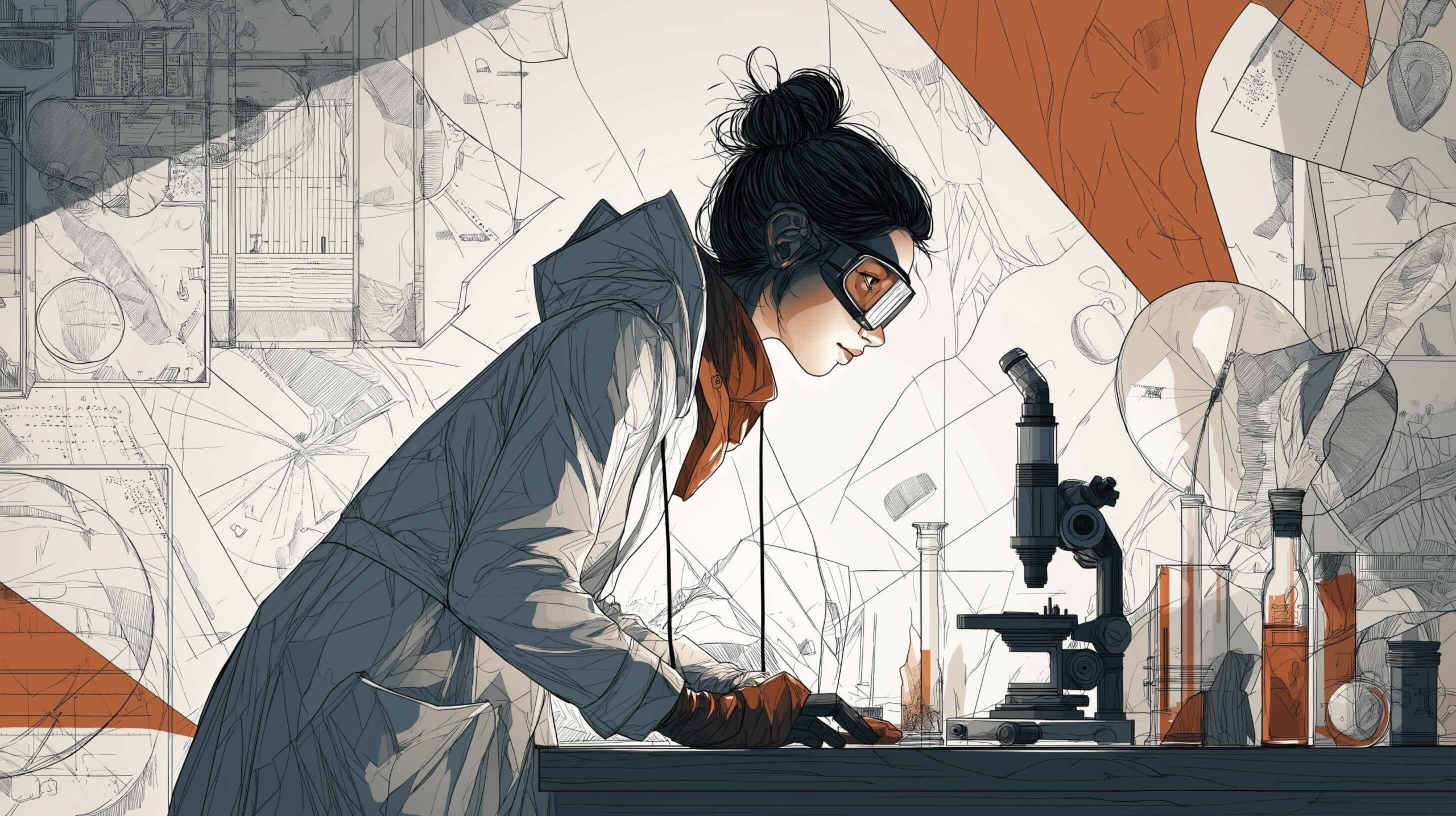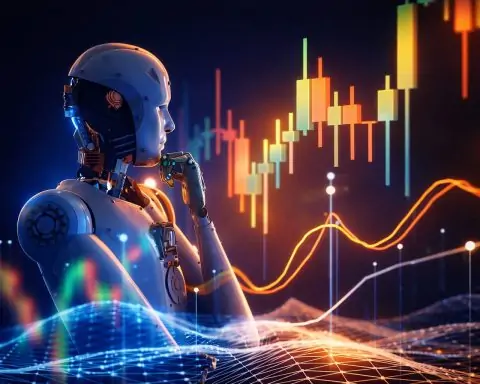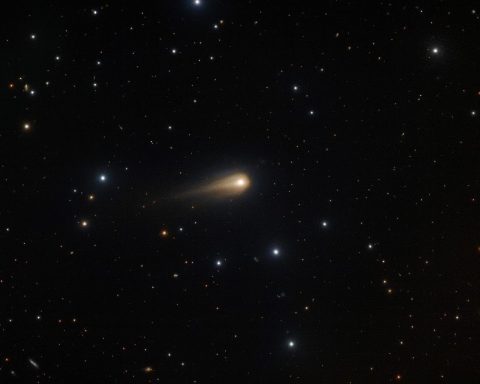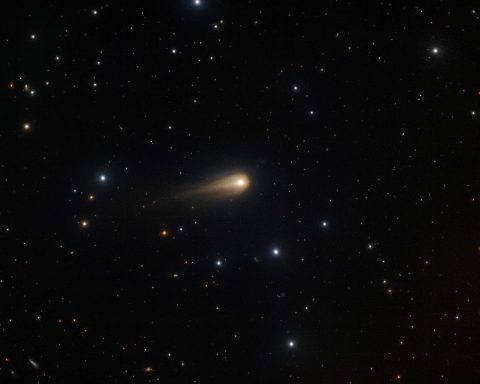August 2025 was packed with scientific advances across health, space, physics, AI, environment, energy, biology, chemistry, and technology. Below we round up the most significant global science news of the month, with each section highlighting key developments and expert insights.
Health & Medicine
- Historic Gene-Editing Saves a Baby: In a world-first case, doctors used a personalized CRISPR base-editing therapy to correct a deadly mutation in an infant with a rare metabolic disease [1]. Developed in just six months, the lipid nanoparticle-delivered treatment markedly improved the baby’s condition [2] [3]. NIH’s Dr. Joni Rutter hailed the milestone: “As a platform, gene editing…promises a new era of precision medicine for hundreds of rare diseases, bringing life-changing therapies to patients when timing matters most: early, fast, and tailored to the individual” [4]. Researchers caution that while this success opens the door for bespoke genetic cures, broader access and safety will be key challenges [5].
- New RSV Immunizations Halve Infant Hospitalizations: Last winter, the first-ever maternal RSV vaccine (for pregnant women) and a new infant antibody were rolled out, and U.S. data show dramatic benefits. Hospitalization rates for respiratory syncytial virus in babies under 8 months fell an estimated 28%–43% compared to pre-vaccine seasons [6] [7]. The youngest infants (0–2 months old) saw the biggest drop – around 45–52% fewer admissions [8]. Researchers say these results validate the strategy of immunizing moms-to-be and newborns: “Increased and earlier use of RSV prevention products…might lead to even larger reductions in pediatric RSV hospitalizations” [9]. This success story shows science translating to near-immediate public health impact.
Space & Astronomy
- JWST Discovers a New Moon of Uranus: Astronomers using the James Webb Space Telescope found a previously unknown moon orbiting Uranus, bringing the planet’s moon count to 29 [10]. The tiny moon (provisionally S/2025 U1) is only ~10 km across and sits at the edge of Uranus’s rings [11]. “It’s a small moon but a significant discovery, which is something even NASA’s Voyager 2 didn’t see during its flyby nearly 40 years ago,” said Dr. Maryame El Moutamid, the finding’s co-author [12]. Uranus now boasts an unusually complex system of inner moons entwined with its rings – “No other planet has as many small inner moons…their complex inter-relationships with the rings hint at a chaotic history… the new moon is smaller and much fainter than the smallest previously known, making it likely that even more complexity remains to be discovered” [13]. In other words, Uranus may be hiding more surprises in its dynamic debris disk.
- Oldest Known Black Hole in the Early Universe: Using JWST, scientists identified the oldest and most distant black hole ever confirmed – dating to 13.3 billion years ago, only ~500 million years after the Big Bang [14]. This supermassive black hole (≈300 million solar masses) resides in a tiny “red dot” galaxy and is forcing astronomers to rethink how such giants grew so fast in the young cosmos [15] [16]. “That begs the question, how did it form so quickly?” said study lead Anthony Taylor. He noted that while modern-day black holes had 13.8 billion years to bulk up, this one “is already massive, but it only had 500 million years to grow” [17]. The discovery is “putting stress on some of our models of how black holes form and how they grow,” Taylor added [18]. By illuminating the era when the first black holes and galaxies appeared, the find offers clues to early universe evolution [19].
Physics
- Muon Magnetism Puzzle Resolved: A long-standing discrepancy in particle physics seems to be solved. New theoretical calculations of the muon’s magnetic moment (g–2) have come into alignment with measurements, ending hints of “new physics” beyond the Standard Model [20]. Earlier experiments had found muons’ magnetism slightly “too strong” to be explained by known theory, tantalizing physicists with a possible crack in the Standard Model. But this month a consortium of theorists reported an updated Standard Model prediction that matches the experimental value [21], erasing the anomaly. “From the theory side…things have changed dramatically,” said Dr. Thomas Blum of the Muon g−2 Theory Initiative, which led the massive lattice QCD computation bringing theory in line with data [22]. While minor tensions remain, “the conundrum is resolved” for now [23] – a relief to some physicists and a disappointment to others hoping for new particles. It showcases how both cutting-edge experiments and computations are pushing precision to new heights in fundamental physics.
- (Physics in Everyday Life) – Also in August, physicists applied theory to the practical: one team showed how sunlight alone can keep tiny aircraft aloft indefinitely by exploiting aerodynamic tricks, and another demonstrated a method to generate oxygen using magnets – a potential boon for astronauts in space [24] [25]. (These developments highlight the creative range of physics research, though the headline-grabbing muon result stole the show.)
Artificial Intelligence
- AI “Surya” Predicts Solar Storms: NASA and IBM unveiled Surya, a new AI heliophysics model that analyzes 9 years of Sun observations to forecast solar flares up to 2 hours ahead [26]. Surya exceeded existing space weather benchmarks by 16% in accuracy, and it provides visual flare location predictions, a major advance for protecting satellites, power grids and astronauts [27]. “Our society is built on technologies that are highly susceptible to space weather,” noted Dr. Joseph Westlake, head of NASA’s Heliophysics Division [28]. “Just as we use meteorology to forecast Earth’s weather, space weather forecasts [with AI] predict conditions in the space environment that can affect Earth and our technologies. Applying AI to data from our missions is a vital step in increasing our space weather defense” [29]. By open-sourcing Surya’s code and trained model, NASA hopes researchers will build on it to improve real-time solar storm warnings [30] [31] – crucial as the Sun nears its 2025 activity peak.
- AI Bests Humans at Weather Forecasts: In a striking display of AI’s power, researchers reported a machine-learning weather model that outperforms traditional forecasting methods [32]. The AI-based system can generate accurate local forecasts much faster and more cheaply than physics-based simulations, yet with comparable (or better) accuracy [33]. For example, it was able to predict key weather patterns days ahead more precisely than leading numerical models by learning from vast historical data. One climate scientist called it a game-changer for meteorology, saying this approach could “enable faster, more accurate forecasts with far fewer computing resources” [34]. Such AI tools might soon assist or even replace some conventional forecasts – though experts caution that human oversight remains important, especially for extreme or unprecedented events that fall outside the AI’s training experience.
(AI is also accelerating drug discovery: in August, one team used AI to scan genomes of Archaea and identified new antimicrobial molecules effective against superbugs [35] [36]. This approach could vastly expand our library of antibiotic candidates, demonstrating AI’s growing role in biology and medicine.)
Climate Science
- Planet’s Temperature Hits Unofficial 1.5 °C Threshold: Global climate indicators reached worrisome heights. July 2025 was Earth’s third-hottest July on record, and EU scientists reported that the 12-month period through July was 1.53 °C warmer than pre-industrial levels, breaching the symbolic 1.5 °C Paris Agreement threshold on a short-term basis [37]. While a sustained 1.5 °C exceedance is still a few years off, the milestone underscores the accelerating warming. “Two years after the hottest July on record, the recent streak of global temperature records is over – for now,” said Carlo Buontempo of the Copernicus Climate Change Service. “But this doesn’t mean climate change has stopped. We continued to witness the effects of a warming world in events such as extreme heat and catastrophic floods in July” [38]. Indeed, intense summer heatwaves and flooding struck parts of Europe, Asia, and North America over the month [39]. Climate scientists warn that temporarily exceeding 1.5 °C is a clear warning sign – and urge faster cuts in greenhouse emissions to prevent a permanent overshoot [40].
- Glacier Burst Triggers Record Alaska Flooding: In early August, a glacier-dammed lake in Juneau, Alaska suddenly drained, causing the worst flood on record in the state’s capital [41]. The Mendenhall River crested at nearly 1,400 cubic meters per second, a flow greater than the average of the mighty Arkansas River [42]. The floodwaters ripped away riverbanks and destroyed several homes. Scientists explain that supraglacial lake bursts like this – essentially glacier-side dams giving way – are becoming more frequent with warming. “Flooding from meltwater is getting worse in Alaska’s capital. Here’s what’s causing it,” noted Science News, pointing to the rapid retreat of the Mendenhall Glacier that led to this event [43] [44]. Local officials had prepared defenses based on previous floods, but this year far exceeded past levels. The event highlights how climate change is already exacerbating hydrological extremes, even in cold regions: a preview of challenges many communities will face as glaciers and permafrost destabilize.
Environment & Ecology
- Penguin Poop Seeds Antarctic Clouds: A quirky yet important climate discovery: Ammonia gas from penguin guano was found to spur cloud formation over coastal Antarctica, potentially cooling the region [45] [46]. Researchers monitoring air near large Adélie penguin colonies recorded ammonia levels 100–1,000 times above background [47]. That ammonia combined with sulfur compounds from marine plankton to create ultrafine aerosol particles that seed clouds [48]. “This shows a deep connection between natural ecosystem emissions and atmospheric processes,” said lead author Matthew Boyer. Emissions from seabird colonies and ocean microbes act synergistically, he explained, “impact[ing] clouds and climate” [49]. In the pristine Antarctic air, ammonia boosted new aerosol formation rates up to 1,000-fold [50], significantly enhancing cloud cover that reflects sunlight. The findings suggest penguin colonies have a non-negligible local cooling effect – a fascinating feedback loop where ecology and climate intertwine. However, as climate change threatens penguin populations and marine life, this natural cooling mechanism could diminish – illustrating the complex ripple effects in the Earth system.
- Monarch Butterflies and Warm Autumns: New research linked unusually warm fall temperatures to declines in North America’s iconic monarch butterflies. Data show that warmer-than-normal autumns disrupt the monarchs’ cues to migrate or enter winter diapause, leading to increased mortality and lower reproductive success [51]. One study found that in years with very warm fall weather in the Midwest, far fewer monarchs made it to overwintering sites in Mexico. Scientists suspect climate change is partly behind recent monarch population drops, compounding other threats like habitat loss. As one ecologist noted, monarchs rely on finely tuned environmental signals – and climate warming is “throwing off the timing” of their life cycle, leaving them out-of-sync with food resources and migration windows. Conservationists argue that mitigating climate change and planting late-season nectar sources could help the threatened butterflies adapt.
(In other ecological news, biologists captured rare footage of the Indonesian coelacanth, a “living fossil” fish, at 144 m depth [52]; and wildlife studies revealed that streaked shearwater seabirds uniquely only poop in mid-flight over the ocean, an odd habit that likely helps them avoid fouling their burrow nests [53] [54].)
Energy
- Fusion Breakthrough via “Cold” Chemistry: The dream of clean fusion power inched closer thanks to an unexpected assist from chemistry. Inspired by old “cold fusion” ideas, scientists used an electrochemical approach to boost nuclear fusion reaction rates in a tabletop experiment [55]. By loading deuterium fuel into a metal (palladium) lattice using an electric current, they achieved 15% more fusion events when bombarding it with deuterium ions, compared to untreated metal [56] [57]. This electrochemical fusion method, reported in Nature [58], did not produce excess energy (it still consumed more power than it made) [59]. However, it showed a new way to overcome some fusion inefficiencies – a “boost” that could be combined with other advances. The authors call it a proof-of-concept that electrochemistry can catalyze fusion reactions, potentially helping future reactors reach the critical threshold of more energy out than in. While true cold fusion remains a fantasy, these results demonstrate that clever chemical engineering at room temperature can meaningfully influence nuclear processes, offering an intriguing path to explore on the long road to practical fusion energy [60].
- Nuclear Power’s Next Gen: Small Modular Reactors Move Ahead: In Europe, Sweden’s state utility Vattenfall took a major step toward deploying small modular reactors (SMRs). The company announced it has shortlisted Britain’s Rolls-Royce SMR and U.S.-based GE Vernova to potentially supply a series of mini nuclear reactors for Sweden’s future energy needs [61]. “Vattenfall has selected [Rolls-Royce and GE] as candidates to supply a series of SMRs,” the utility said Aug. 21 [62]. This comes as Sweden (like many countries) explores SMRs as a complement to renewable energy – offering steady, carbon-free power in a smaller, safer package than traditional large reactors. Globally, SMR development is heating up: the U.S., UK, Canada, and others are all racing to license the first designs. Proponents argue that factory-built SMRs could be deployed faster and cheaper, helping meet climate goals. If Vattenfall’s plan proceeds, Sweden could see its first SMR operational in the early 2030s. Analysts call 2025–2030 a crucial window for proving whether SMRs can fulfill their promise of a nuclear resurgence, or whether economic and regulatory hurdles will delay them further [63].
(On the renewable front, scientists unveiled new high-efficiency indoor solar cells that harvest energy from household LED light – potentially powering small electronics without batteries [64] [65]. And in Japan, engineers used machine-learning to design a wireless power transfer system that can charge devices at steady voltage regardless of load, a key step toward safe wireless charging of cars and appliances [66] [67].)
Biology & Medicine
- Human Evolution’s Family Tree Grows Bushier: Fossils discovered in Ethiopia revealed that early Homo co-existed alongside a late-surviving Australopithecus around 2.6 million years ago [68] [69]. Paleoanthropologists found 13 hominin teeth at the Ledi-Geraru site, including some of the earliest Homo fossils (~2.78 Myr old) and a set of teeth from a previously unknown Australopithecus species dating to ~2.63 Myr [70] [71]. This overlaps in time and place with Australopithecus afarensis (“Lucy’s” species), which was thought to have died out ~2.95 Myr ago [72]. “We used to think of human evolution as fairly linear, with a steady march from an ape-like ancestor to modern Homo sapiens,” says Dr. Brian Villmoare of UNLV [73]. “Instead, humans have branched out multiple times into different niches…Nature experimented with different ways to be a human” as climates fluctuated [74] [75]. The fact that a new Australopithecus and early Homo lived side-by-side “shows that human evolution is less linear and more tree-like,” Villmoare adds [76]. The find, published in Nature, extends the record of Homo back to at least 2.8 Myr [77] and underscores that our genus emerged amidst a diversity of other hominins, rather than as a single direct progression. It’s a transformative insight into our origins, emphasizing the patchwork nature of evolutionary change.
- Brain Implant Reads ‘Inner Speech’: Neuroscientists have developed a brain-computer interface (BCI) that can decode a person’s internal monologue – the words one thinks but does not speak – enabling severely paralyzed patients to communicate at natural speed. In a breakthrough study, implants in the motor cortex recorded neural signals as participants simply imagined speaking, and AI algorithms translated the brain activity into text in real time [78] [79]. Four individuals with ALS or brainstem stroke (who cannot speak) used the system to achieve typing rates of 120–150 words per minute by mind alone [80] [81]. “Our goal is a system that is comfortable for the user and ideally reaches a naturalistic ability,” said lead author Dr. Erin Kunz of Stanford [82]. Attempting to speak with previous BCIs was slow and exhausting – often requiring multiple breaths per word – but with this new “inner speech” device, participants conversed “with no more effort than it took to think of what they wanted to say” [83] [84]. The decoded vocabulary was large (125,000 words) and the interface even allowed one man to interrupt conversations again after years of passively listening [85]. To address privacy concerns, the team added a mental “password” phrase that users must think (“chitty chitty bang bang”) to start or stop the decoding [86]. Ethicists note this tech raises questions about safeguarding thoughts, but for patients who have lost speech, it offers new hope of regaining spontaneous, speedy communication [87] [88]. Doctors not involved in the research praised the work as “great” and patient-focused, aiming to solve real problems like restoring a personal voice and autonomy to those who can no longer speak [89].
Chemistry
- New Carbon Allotrope Created – Cyclo[48]Carbon: Chemists at the University of Oxford succeeded in synthesizing a long-elusive form of carbon: a 48-atom carbon ring dubbed cyclo484848carbon. Previous carbon rings have only been observed fleetingly at cryogenic temperatures, but the Oxford team stabilized C₄₈ by threading it through larger macrocycles (forming a catenane), allowing the ring to persist in solution at room temperature [90] [91]. Cyclo[48]carbon consists of 48 carbon atoms bonded in an alternating single and triple bond pattern – a cycle of sp-hybridized carbons [92]. “Achieving stable cyclocarbons in a vial at ambient conditions is a fundamental step,” said Dr. Yueze Gao, lead author on the study in Science. “This will make it easier to study their reactivity and properties under normal laboratory conditions” [93]. His mentor, Prof. Harry Anderson, noted this achievement “marks the culmination of a long endeavor” to trap a cyclocarbon large enough and protected enough to not fall apart immediately [94]. The ability to produce and analyze cyclo[48]carbon opens a new frontier in carbon chemistry – these rings have unique electronic structures and could lead to novel molecular electronics, carbon-rich materials, or insights into carbon’s bonding limits. It’s a landmark in synthetic chemistry, expanding the known allotropes of carbon (which include graphite, diamond, fullerenes, nanotubes, graphene, and smaller cyclocarbons) with an eye toward future applications.
- “Forever Chemicals” Destroyed by Sunlight Catalyst: A team in Australia developed a novel method to break down PFAS – the notoriously persistent “forever chemicals” – into benign components [95] [96]. PFAS are synthetic fluorinated compounds found in nonstick and waterproof products; they resist natural degradation and pose health risks. The researchers used a photocatalyst (cadmium indium sulfide) activated by sunlight to demolish one common PFAS (perfluorooctanoic acid) in water, destroying 99% of it and releasing only fluoride ions (which are harmless at low concentrations) [97] [98]. “PFAS contamination continues to pose a global health risk, and this research represents a critical step toward safer communities and cleaner ecosystems,” said project lead Dr. Cameron Shearer of University of Adelaide [99]. Essentially, the catalyst’s electrons sever the tough carbon–fluorine bonds that make PFAS so indestructible, reducing the molecule to fluoride and simple carbon compounds [100] [101]. Unlike some earlier PFAS treatments, this method doesn’t produce other toxic intermediates and could potentially be scaled for water treatment facilities. While not a panacea for all PFAS pollution, the advance is significant given the huge scale of PFAS contamination (98% of Americans have PFAS in their blood [102]). By “beheading” the PFAS molecules with light-driven catalysts (as one co-author put it), chemists are finally getting a handle on how to detoxify these pervasive pollutants in the environment [103].
Sources: Primary scientific reports and expert commentary were drawn from peer-reviewed journals and reputable outlets including Science News, Nature, Science, Scientific American, Live Science, Reuters, NASA, and university press releases. Key references for each story are indicated in the text [104] [105] [106] [107] [108] [109] [110] [111] [112] [113] [114] [115] [116] [117] [118], among others. Each citation links to the original source for further reading on that development. This multidisciplinary roundup highlights how August 2025 saw leaps forward – from saving lives with cutting-edge medicine to discovering new worlds (and new moons), all while confronting challenges on Earth and pushing the boundaries of human knowledge.
References
1. www.nature.com, 2. www.nih.gov, 3. www.nih.gov, 4. www.nih.gov, 5. www.sciencenews.org, 6. www.cidrap.umn.edu, 7. www.cidrap.umn.edu, 8. www.cidrap.umn.edu, 9. www.cidrap.umn.edu, 10. www.sci.news, 11. www.sci.news, 12. www.sci.news, 13. www.sci.news, 14. www.sciencenews.org, 15. www.northcountrypublicradio.org, 16. www.northcountrypublicradio.org, 17. www.northcountrypublicradio.org, 18. www.northcountrypublicradio.org, 19. www.northcountrypublicradio.org, 20. www.sciencenews.org, 21. www.sciencenews.org, 22. www.sciencenews.org, 23. www.sciencenews.org, 24. www.sciencenews.org, 25. www.sciencenews.org, 26. science.nasa.gov, 27. science.nasa.gov, 28. science.nasa.gov, 29. science.nasa.gov, 30. science.nasa.gov, 31. science.nasa.gov, 32. www.sciencenews.org, 33. www.sciencenews.org, 34. www.sciencenews.org, 35. www.sci.news, 36. www.sci.news, 37. www.reuters.com, 38. www.reuters.com, 39. www.reuters.com, 40. www.reuters.com, 41. www.sciencenews.org, 42. www.sciencenews.org, 43. www.sciencenews.org, 44. www.sciencenews.org, 45. phys.org, 46. eos.org, 47. eos.org, 48. eos.org, 49. eos.org, 50. eos.org, 51. www.sciencenews.org, 52. www.sci.news, 53. www.sciencenews.org, 54. www.sciencenews.org, 55. www.nature.com, 56. www.nature.com, 57. www.nature.com, 58. www.nature.com, 59. www.nature.com, 60. www.nature.com, 61. www.reuters.com, 62. www.reuters.com, 63. www.reuters.com, 64. www.livescience.com, 65. www.livescience.com, 66. www.livescience.com, 67. www.livescience.com, 68. www.sci.news, 69. www.sci.news, 70. www.sci.news, 71. www.sci.news, 72. www.sci.news, 73. www.sci.news, 74. www.sci.news, 75. www.sci.news, 76. www.sci.news, 77. www.sci.news, 78. www.scientificamerican.com, 79. www.scientificamerican.com, 80. www.scientificamerican.com, 81. www.scientificamerican.com, 82. www.scientificamerican.com, 83. www.scientificamerican.com, 84. www.scientificamerican.com, 85. www.scientificamerican.com, 86. www.scientificamerican.com, 87. www.scientificamerican.com, 88. www.scientificamerican.com, 89. www.scientificamerican.com, 90. www.sci.news, 91. www.sci.news, 92. www.sci.news, 93. www.sci.news, 94. www.sci.news, 95. www.livescience.com, 96. www.livescience.com, 97. www.livescience.com, 98. www.livescience.com, 99. www.livescience.com, 100. www.livescience.com, 101. www.livescience.com, 102. www.livescience.com, 103. www.livescience.com, 104. www.nature.com, 105. www.nih.gov, 106. www.sci.news, 107. www.northcountrypublicradio.org, 108. www.sciencenews.org, 109. science.nasa.gov, 110. www.reuters.com, 111. www.sciencenews.org, 112. eos.org, 113. www.nature.com, 114. www.reuters.com, 115. www.sci.news, 116. www.scientificamerican.com, 117. www.sci.news, 118. www.livescience.com










